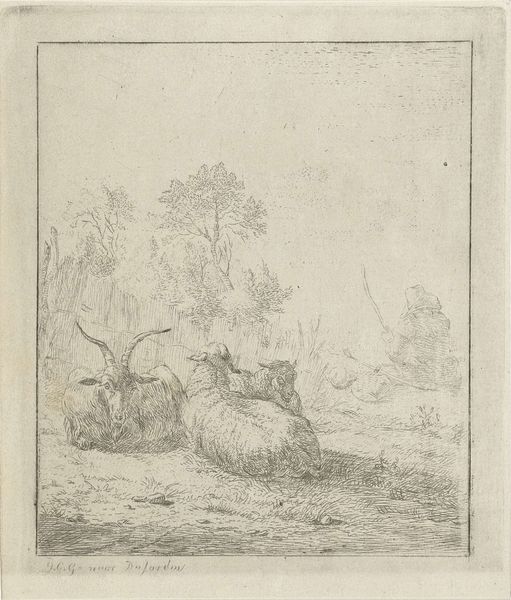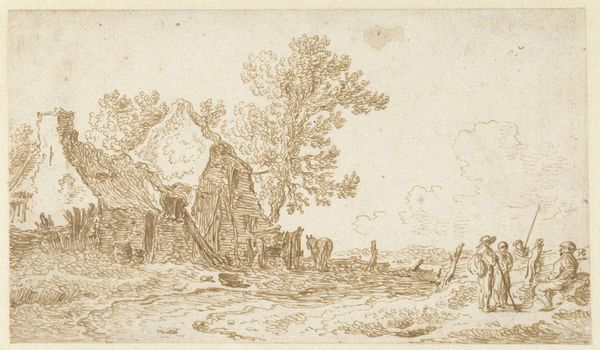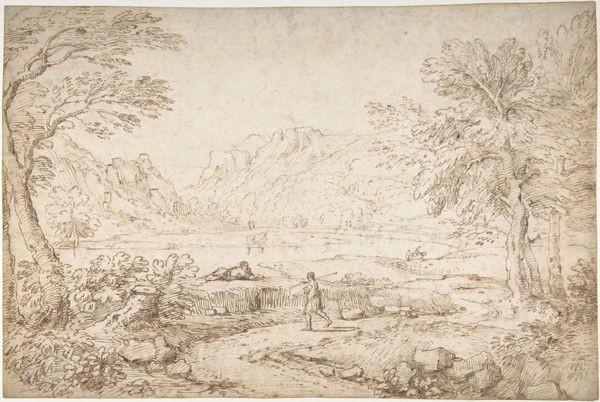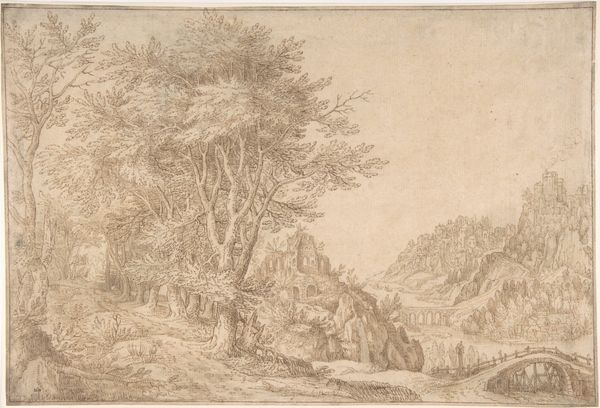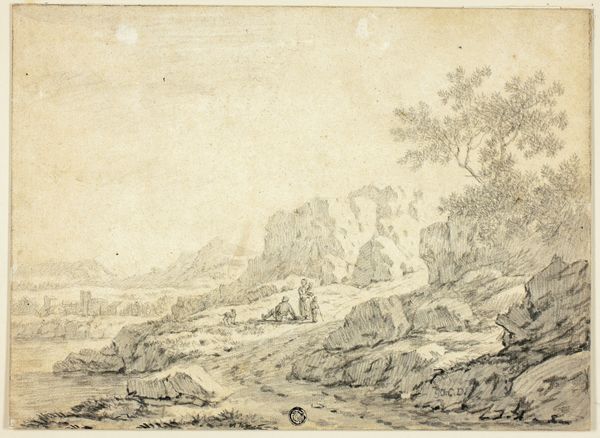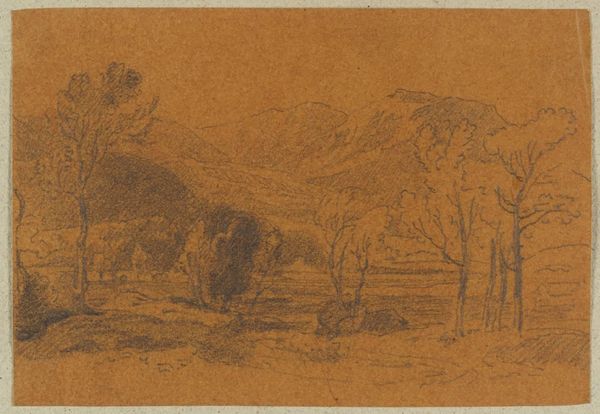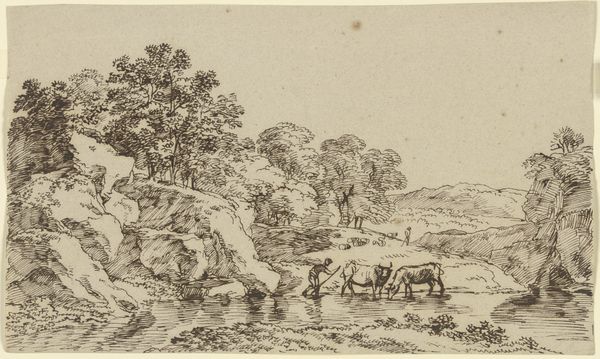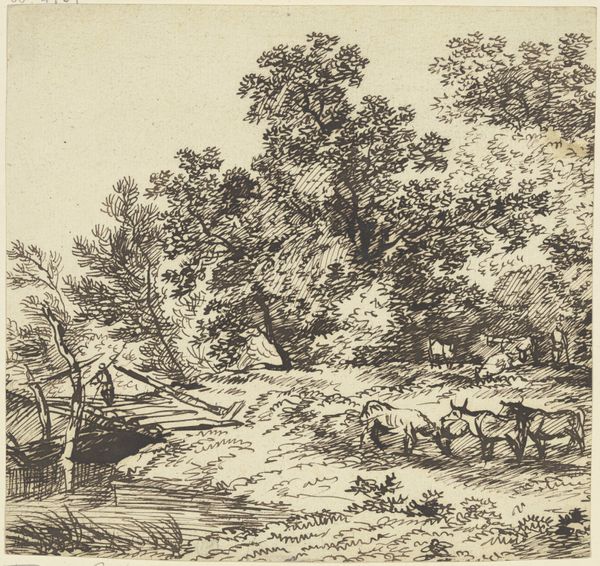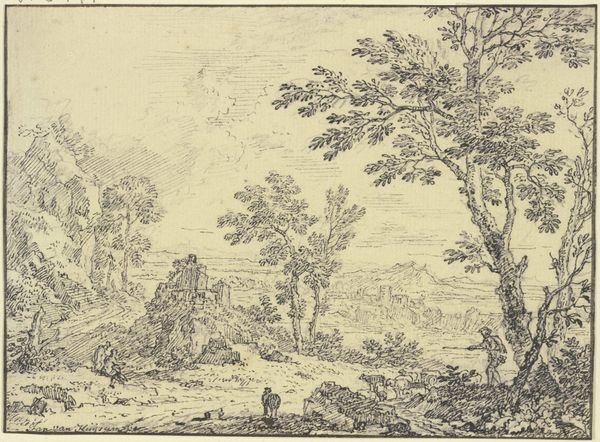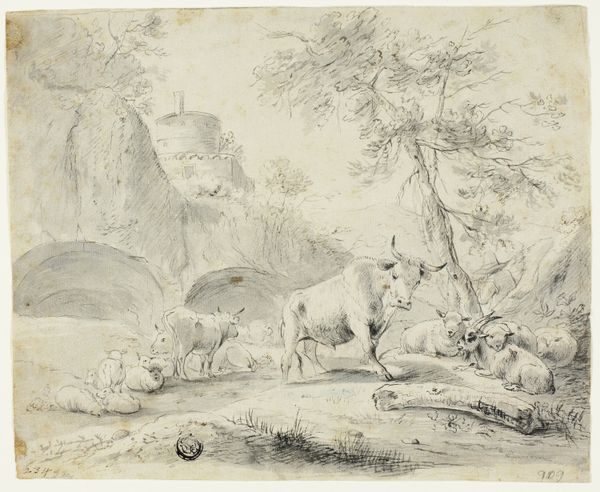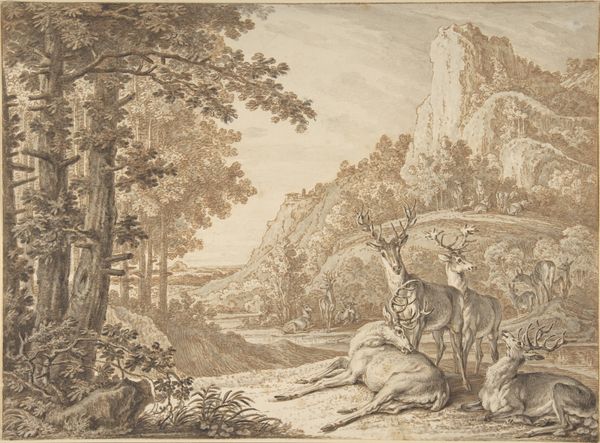
etching
#
etching
#
landscape
#
etching
#
line
#
genre-painting
#
realism
Dimensions: height 164 mm, width 220 mm
Copyright: Rijks Museum: Open Domain
Editor: This is "Landschap met schaapherder en zijn kudde," or "Landscape with Shepherd and his Flock" by Pieter de Goeje, dating from between 1789 and 1859. It's an etching, rendered in delicate lines of sepia ink. It feels very pastoral, quite tranquil, but almost to a fault. It makes me wonder what the story here is... what do you see in it? Curator: Immediately, the strength of this work lies in its meticulous line work. De Goeje’s technique here invites contemplation on form. How would you describe the interplay between the shepherd, the sheep, and the landscape? Editor: I'm struck by how the landscape seems to echo the rounded forms of the sheep, while the shepherd is this very sharp, angular form on the other side. It creates this dichotomy between nature's softness and, I don't know, civilization's...sharpness? Is that reaching too far? Curator: Not at all. The opposition you noted serves as a visual device. Semiotically, we may decode the shepherd as the disruptor of nature's equilibrium or the agent who orders its elements. Notice, also, the almost monochrome palette. What effect does it produce, and what purpose does it serve? Editor: Well, it definitely flattens the image. It's not realistic, in that sense. But maybe the limited tonal range emphasizes the shapes themselves, their texture and their relations rather than the realistic colors of the land. It almost feels… conceptual? Curator: Precisely. De Goeje subverts a purely representational reading, privileging formal relationships within the composition. The material, etching, inherently emphasizes the graphic structure. Note the relationship between foreground and background. Do the hill or mountain appear distant? Editor: No, they're rendered with the same sharpness of line, but are much less focused-on than the Sheep and Shepard in the very front. That equal weight almost undermines any sense of spatial depth. The interplay you are showing me here is really well put together! Curator: Indeed. The artwork challenges conventional perspective. The material qualities are not divorced from content; it makes you realize that line can represent any boundary to thought as a limitation of our gaze on things, if the lines in this plate have a will to see or not to see certain things. The artist chose an important technique. Editor: I never thought of it that way. So it's less about representing reality and more about exploring form and line itself? I'll keep that in mind next time.
Comments
No comments
Be the first to comment and join the conversation on the ultimate creative platform.
